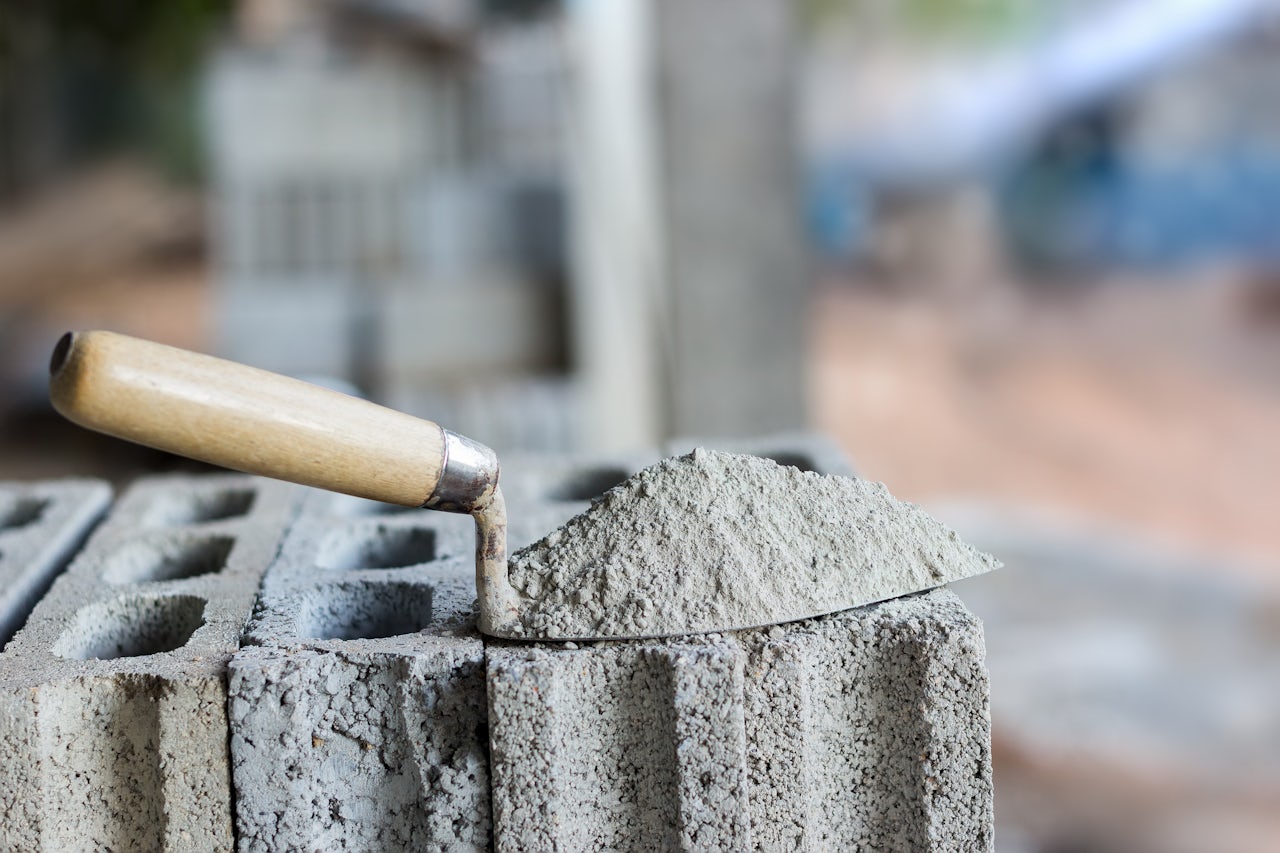Earlier this year, Sara Law of the Carbon Disclosure Project raised her hand at a conference in New York on government and private sector initiatives to address climate change. She politely asked the panel, which had been assembled to discuss opportunities for investing in low-carbon infrastructure, whether they knew how much cement each project might require. The panel members shifted uncomfortably in their seats and chuckled; no one jumped in immediately to respond.
Law didn’t mean to embarrass her peers. But her question unraveled some of the panel’s forced optimism that has hung around climate conferences of late. Environmental academics and activists have been joined onstage by financiers with promises of investment opportunities in the ongoing transition to a more sustainable economy. Not many want to fret over cement, the world’s second-most consumed material behind water, and how its use in this economic transition might prevent our society from achieving its climate goals.
Because there are just so many opportunities, they say, for savvy investors and conservationists alike: renewable energy projects; new energy grids; updates to our nation’s battered piped water system (which leaks enough drinking water a day to serve 15 million households). Governments and environmentally minded investors luxuriate in these types of projects because they can help prevent human-caused, or anthropogenic, global warming without sacrificing economic growth.
The problem is that many of these projects require concrete. A lot of concrete. This worries Law and her colleagues at the Carbon Disclosure Project, a non-profit that tracks industrial greenhouse-gas emissions and promotes proper carbon disclosure. The CDP recently released a report, “Building Pressure: Which cement companies will be left behind in the low-carbon transition,” warning the cement industry — cement being the main binder in concrete — that “in its current form, it will not be compatible with” any nation’s commitment in the Paris agreement; and if radical changes do not occur the world will “risk missing [its] climate goals.”
Cement is perhaps the most essential ingredient in an economy’s growth. The incredible scale of its importance was illuminated in the historian Vaclav Smil’s book, Making the Modern World: Materials and Dematerialization, which told of Chinese companies using more cement between 2011 and 2013 than the U.S. did throughout the entire 20th century. That staggering figure doesn’t even account for the cement needed to complete China’s ambitious (and environmentally destructive ) Belt and Road Initiative.
According to the CDP report, the cement industry is the second-largest industrial emitter of carbon after the steel industry. And when accounting for its use in human-made structures, it is responsible for more than a third of the world’s carbon emissions. But unlike the transportation sector, in which a new type of fuel can dramatically decrease the sector’s pollutants, cement’s problem is, well, cemented in its formulation: Limestone is mixed with other raw materials in an immense kiln at high temperatures; as the kiln separates the limestone’s calcium carbonate structure, an extremely dirty strand of carbon is emitted by the ton.
The resulting hard substance is called a "clinker” (this onomatopoeia has its origins in Holland from the word “klinken,” which means “to ring”), and it is then pounded into the recognizable powder that is blended with material binders and water to form cement.
For cement companies, lowering emissions would mean either developing a whole new material or investing in carbon-capture systems, a technology that can capture and store the carbon dioxide emitted by an industrial process. Yet the CDP found the industry to be unwilling or unable to finance the research required to develop a low-cost, low-carbon alternative to cement.
The report chalks up the industry’s intransigence to a business model that, economically at least, is doing quite well. Infrastructure projects need concrete and cement, regardless whether they’re for a low-carbon economy. The average wind turbine, for example, needs about 12,400 to 17,700 cubic feet of concrete made with cement. On the conservative end, that’s 57 trucks worth of concrete. The turbine will produce about three megawatts of energy on average which, when working at full capacity, is enough to power 2,400 U.S. homes for one month.
And wind farms require less cement than most other proposed infrastructure projects. The turbine hall of a nuclear reactor requires 945,000 cubic feet of concrete (4,400 trucks); a wastewater treatment plant requires 270,000 cubic feet of concrete (1,100 trucks).
Concrete is needed to upgrade all our roads to accommodate the autonomous vehicles being developed by tech companies, to construct and upgrade buildings to be LEED certified, to secure all the solar panels being fitted here and abroad, and to build desalination plants for water-stressed communities. The report exposes quite the paradox: We desperately need these infrastructure projects to transition to a carbon-neutral world, but in doing so we will have to emit a massive amount of carbon.
The issue goes beyond the industry. Material scientists, those best suited to study and improve cement’s molecular chemistry, have begun developing a form of cement that uses far less calcium (the pollutive material in cement) in its production. Franz-Josef Ulm, a professor of civil and environmental engineering at MIT, has worked with his team to lower the amount of pollutive calcium in cement’s molecular structure, dramatically decreasing the emissions associated with it and increasing its strength two-fold. The material is in production but not yet feasible for widespread use and hasn’t been tested for long-term durability.
“We have created the Ferrari, now we need to create the Ford,” Ulm said. To accomplish this, Ulm and his team have partnered with the Portland Cement Association, a non-profit that promotes the use of concrete, to bring their alternative cement into the mainstream. “We desperately need more industry partners,” Ulm told me. “The cement industry is a business, they will keep selling the product everyone already knows and wants. Really, what we need is [carbon-pricing] legislation.”
This would require the cement industry to explore the use of alternative materials in their factories, but according to the CDP report, the industry has only used a token amount of their revenues to explore alternatives. And due to their lack of scientific acumen, they’ve focused on using different raw material mixers for cement which are introduced after the carbon intensive portion of the process.
We desperately need new infrastructure projects to transition to a carbon-neutral world, but in doing so we will have to emit a massive amount of carbon.
No one in the cement industry has seriously engaged in the herculean task of enhancing the material’s molecular chemistry, nor have they looked to use Ulm’s alternative at scale, according to the professor. Why introduce a new product if everyone is already buying your old one?
Ultimately, the wider consequences of the CDP’s findings are hard to predict. But its conclusions savagely lay bare the fallacy that, at our current state, we can solely use large scale infrastructure to develop ourselves out of the problem of anthropogenic global warming. The CDP’s findings suggest that we scale back development, focus on enhancing the materials we encounter every day, and push governments to regulate the cement industry.
This was the hope of Marco Kisic, the report’s main author. In a recent interview with The Outline he was optimistic, speaking about new technologies for cement plants that have been brought to market in places like Norway and Belgium that are 80 percent less polluting than their traditional counterparts.
Kisic said companies are beginning to understand that the tide is moving against them. “There is some low-hanging fruit the industry can take advantage of to become more sustainable; like changing the fuel used to make cement from coal to clean sources,” he said. “After that, you hit the hard stuff: retrofitting [plants with] carbon capture systems, pushing for legislation on carbon pricing, and using low-carbon cements that are slowly being developed.”
Kisic believes the sector will see the risks its creating and act accordingly. It’s a gesture discordant with the report’s findings, which emphasize that “companies see a much higher likelihood of opportunities occurring than risks, and those opportunities occurring” before the risks manifest themselves, a mindset that prevents their “investing in solutions to reduce [cement’s] carbon intensity.”
As long as the world clamors to build, the cement industry has little incentive to disrupt the status quo.
Correction appended An earlier version of this story said that a wastewater treatment plant requires 270,000 cubic yards of concrete. A wastewater treatment plant requires 270,000 feet of concrete, not yards.



